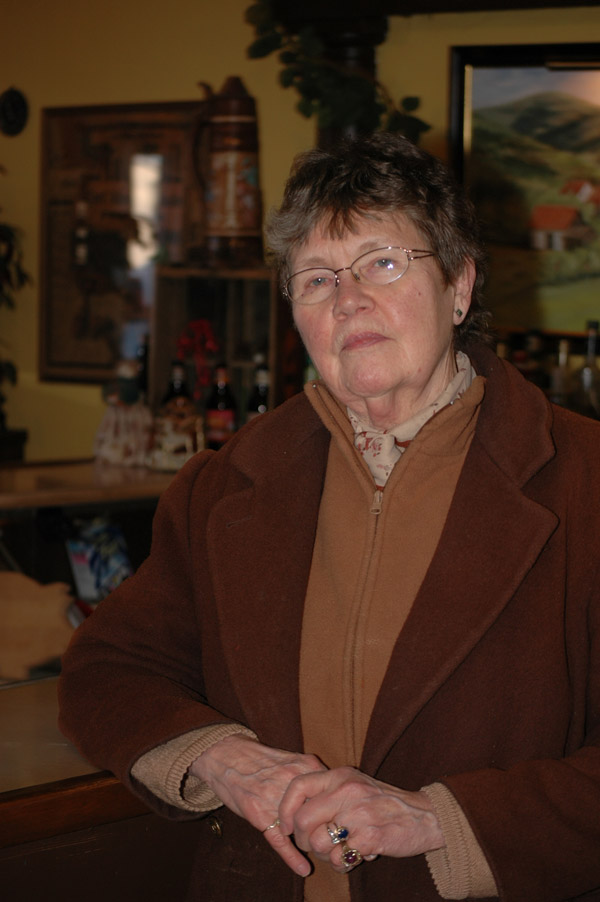Ask a Lakeland student where the college’s main campus is located and you will most likely learn that it is northwest of Sheboygan, northeast of Plymouth, east of Elkhart Lake, or “just up the road” from Howards Grove. It’s almost never described as being next to Franklin.
Most campus residents, in fact, do not seem to know much about Franklin, the tiny village just off County Highway A near the southwest corner of the campus. It appears as merely a wide spot in the road on the way to Elkhart Lake, Plymouth, or Road America—hardly noticeable in today’s world of open highways and fast cars.
Franklin, though, shares a history with Lakeland.
According to an historical account titled “Wisconsin’s Lippe-Detmolder Settlement” by Jerome B. Arpke, the village began life during the mid-nineteenth century when about a hundred immigrants fleeing economic strife in Detmold, a city in the Lippe region of northwest Germany, settled along the banks of the Sheboygan River. They cleared and cultivated land for miles around, then built Franklin as a community center.
Within a few years of the village’s founding, writes Arpke, farmers Friedrich Reineking and Simon Steffen donated five acres to Pastor H.A. Winter to establish a school of theology. The original school building, called “Missionhaus,” was built in 1862. It later became known as “Mission House.”
But there was another, earlier Missionhaus. It was a lesser known building located within the borders of the village of Franklin, and was used even before the college officially existed. It wasn’t an institutional building like Old Main, but merely a residence that included a classroom. The place served as a seminary for a short period immediately after the village was founded. Some consider that building, which still exists on the main road near County Highway A, as the first, albeit unofficial, home of Lakeland College.
According to some longtime residents, a more-or-less permanent trail was established through the woods between Lakeland and Franklin after the construction of Old Main to keep the connection between the two places open. The trail provided Lakeland residents access to Franklin Haus, a tavern that had been built in the village during 1857. According to many locals, Franklin Haus became the preferred “watering hole” for students of the period. Stories persist of barkeepers finding seminarians asleep some mornings, their heads resting on the tavern’s bar where they would be awakened and fed a substantial breakfast before being shooed back through the woods to school.
While a few students find apartments and rooms in Franklin these days, not much is said about the old footpath through the woods.
Franklin Haus still stands on the east side of Franklin Road, and has been nearly restored to its original condition by Carol Rittenhouse, who purchased the property in 2005. The tavern houses a water well that was hand-dug by the Lipper colonists. “This is considered to be the only such well in Wisconsin’s original ethnic settlements available for public viewing,” says Rittenhouse.
The tavern’s owner has acquired adjacent properties dating to the same era and is working with Wisconsin’s Ethnic Settlement Trail (W.E.S.T.), a part of Ethnic Wisconsin, to restore a significant number of the village’s former business structures. One of the structures is the Franklin Mill, which is listed on the National Register of Historic Places. She hopes to see a park created on the east side of the river, across from the tavern.
“I’d like to see the restoration project attract visitors,” Rittenhouse says. She envisions the restored structures being used as condominiums, guest rooms, and a farmers’ market to help attract visitors. She is, in fact, planning to introduce wine tasting and the sale of fresh, organically-grown vegetables to the activities at Franklin Haus, and notes that Franklin is a unique community that has preserved an unusually high number of its historic features.
One of those features has recently been lost. The village’s old dam, purportedly built over an actual beaver dam in the 1850s, was removed in 2001 after failing a Wisconsin Department of Natural Resources (DNR) inspection. The old mill pond, which extended from the dam northward nearly a mile to County Highway FF, was drained and the river returned to pre-settlement levels.
Even though the event altered the historical landscape, it could prove to be a blessing in disguise by attracting even more visitors. While the dam existed, the large surface area of the mill pond allowed the water to become warm, killing some native fish species sensitive to temperature changes. Now that the water is moving within the original banks of the river again, the temperature has returned to its natural level.
A news article titled “Alliance makes progress on ‘Twenty by 2000’ goal” on www.wisconsintu.org said the Lakeshore Chapter of Trout Unlimited and the Wisconsin DNR have worked together to restore the channel and banks, transforming the area into a cold-water fishery capable of once again breeding the species. Just prior to the dam’s removal, Wisconsin Trout Unlimited predicted that ten miles of free-flowing river would eventually be restored. This would improve the habitat for smallmouth bass, northern pike, and trout. This could help make the area a more attractive fishing destination.
That potential, along with the residents’ efforts to restore the settlement, seems to make the future of Franklin brighter than it has been for years. It may well result in the village becoming a more important part of Lakeland’s 2012 sesquicentennial celebration, the article said.
Attendees at that event may want to occasionally glance toward Grether woods, which separates Lakeland from Franklin. There, they might just catch sight of the shadowy figures of long-ago students sneaking into the trees on their way to Franklin Haus tavern.


